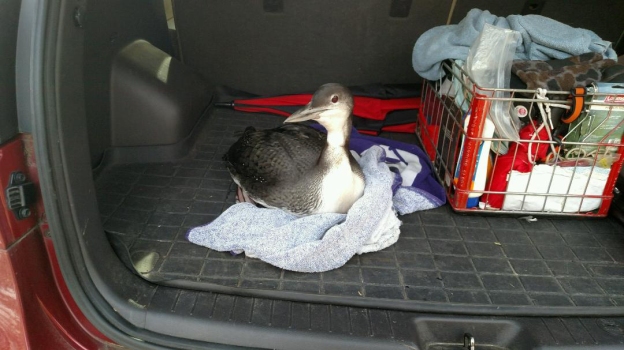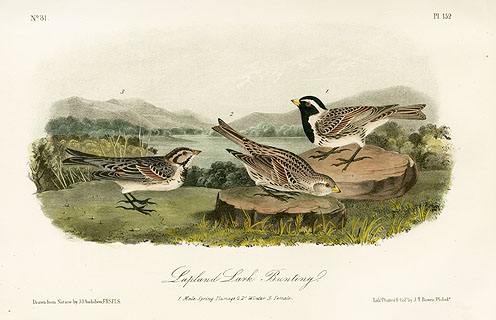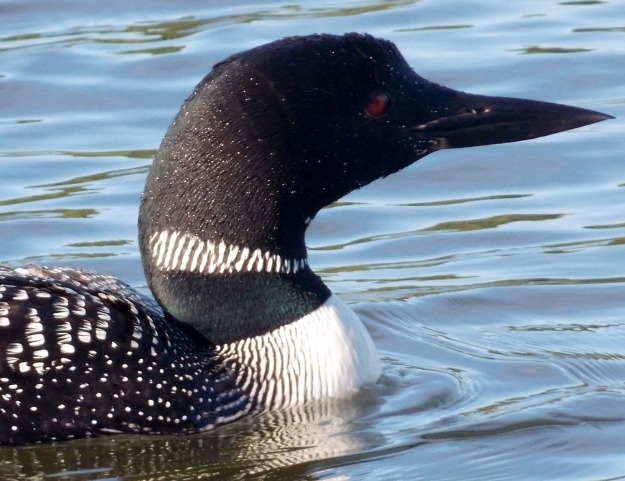
Photo by dkbach/Pixabay.com • The common loon is a masterful diver and swimmer, but these birds are awkward and nearly helpless on land.
An early December snowstorm had deposited a blanket of snow over the landscape, but milder temperatures quickly melted the snow on roadways when a weary — or perhaps disoriented — traveler made a crash landing.
Complete disaster was avoided thanks to the efforts of Joe McGuiness, a resident of Erwin, Tennessee, as well as an employee of the U.S. Forest Service. Joe shared the story at a recent meeting of the Elizabethton Bird Club.
Joe discovered the stranded traveler just after he finished having lunch on Dec. 6. He looked out his window and saw a “dark blob” in the driveway.
Joe recognized that the blob was actually an immature common loon. As he went to investigate, the bird tried to slide downhill on some of the recent snow.
Waterfowl like loons and grebes occasionally make landings on wet roadways. These birds mistake the dark, damp asphalt for water and don’t realize their error until it is too late.
“It probably landed on a neighborhood road by mistake,” explained Joe, who resides in the Rolling Hills residential community in Erwin. Over the years, Joe has been a magnet for some unusual birds. Several years ago, an American woodcock became a daily visitor for a spell in the community where Joe lives. Several birders got an opportunity to see that particular bird, which is usually extremely elusive and difficult to observe at close range.
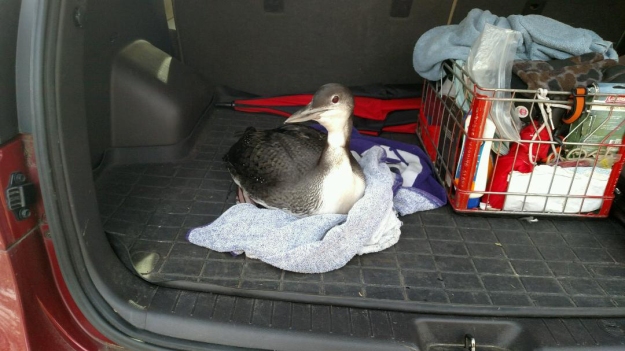
Photo courtesy of Joe McGuiness • When this common loon stranded itself, Erwin resident Joe McGuiness went into action, collecting the bird for transport to a nearby pond. Because of the position of their feet on their bodies, loons are almost incapable of walking on land.
Once he identified the loon, Joe still faced the challenge of rescuing it. Without human intervention, the bird would have been doomed. Loons, while so graceful and powerful in their element, are clumsy and almost helpless on land. According to loons.org, the official website for The Loon Preservation Committee, the placement of a loon’s legs at the far back of the body ensures that loons are excellent divers and swimmers. It also means that loons can not easily walk on land. This difficulty is one reason why loons nest right next to the water. At night, loons sleep over deep water, away from land, for protection from predators.
Once a loon lands on any body of water, it requires a considerably long “runway” to take off again. They sort of run along the surface of the water to gain the momentum to become airborne again. Obviously, that’s not going to happen for one of these birds if they’ve made the mistake of putting down on dry land. Fortunately, Joe realized he would need to help the loon reach water.
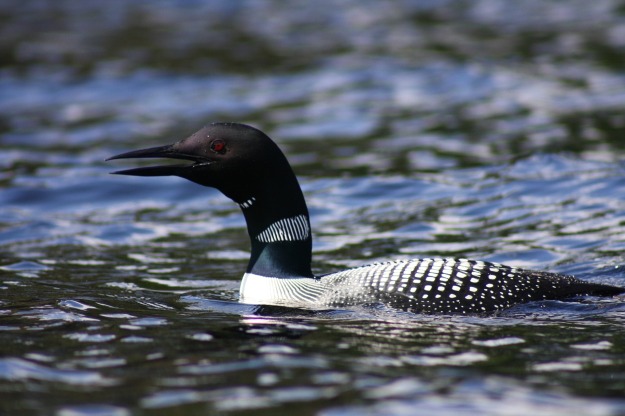
Photo by Krista-269/Pixabay.com • Common loons in summer breeding plumage are strikingly handsome birds that show much grace and agility in the water.
By tossing a coat over the loon, Joe managed to subdue the bird and transport it to a local pond for release. As he placed the bird at the edge of the pond, the loon surprised him and didn’t budge. Joe gave the bird a helpful nudge. In response, the bird turned and whacked him in the face with its beak. I suppose no good deed goes unpunished.
Eventually, the frightened loon moved into the water. The loon has remained on the pond recuperating for several weeks, which has allowed people to see the rescued creature.
In the northern United States and Canada, the common loon is often put forward as a symbol of the wilderness areas where it likes to reside on ponds and lakes for the summer nesting season. In Europe and Asia, the common loon is known by the more descriptive name “great northern diver.”
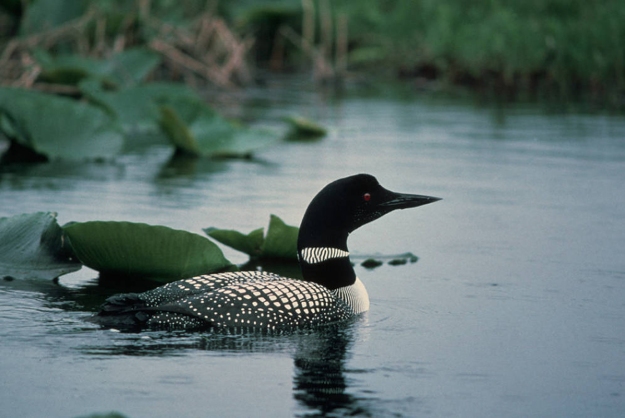
Photo by U.S. Fish & Wildlife Service • Common loons are quite at home in the air and on the water, but these birds are awkward if weather forces them to set down on land.
A common loon can reach a length of 3 feet. This bird’s wingspan can stretch out to almost 5 feet. They can attain a weight between 9 and 12 pounds, which is quite heavy for most birds.
All five living species of loons are members of the genus Gavia, which in addition to the common loon also includes red-throated loon, Arctic loon, Pacific loon and yellow-billed loon. All loons feed chiefly on fish.
It’s usually human behavior that puts loons at risk. For example, ingested lead fishing tackle is a leading cause of mortality for loons in New Hampshire. Joe’s encounter with a loon, and its happy ending, spotlights how people can sometimes help these beautiful birds instead of harming them.

Photo by U.S. Fish & Wildlife Service • A Pacific loon if breeding plumage.

